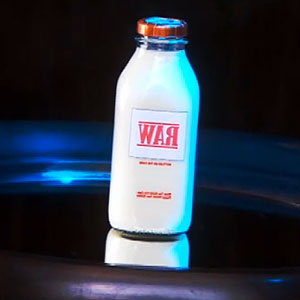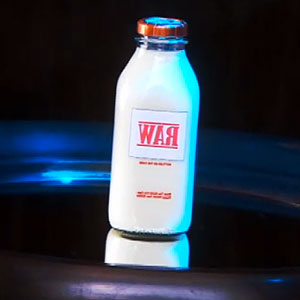 This past weekend, the U.S. Food and Drug Administration (FDA) put out a press release stating it had epidemiological evidence connecting three illnesses from campylobacter to raw milk distributed in North Carolina. Possibly five other people might have been affected, the release stated.
This past weekend, the U.S. Food and Drug Administration (FDA) put out a press release stating it had epidemiological evidence connecting three illnesses from campylobacter to raw milk distributed in North Carolina. Possibly five other people might have been affected, the release stated.
The consumers obtained the milk via a private food club that arranged delivery of the milk from South Carolina, where raw milk can be legally sold, to North Carolina, where it can’t.
A couple things were notable about the press release. First, it was issued on a Saturday, which isn’t normally an FDA workday. That suggested it was an urgent public safety matter … except that the illnesses occurred in mid-June.
Second, it was put out on PR Newswire, the largest, and most expensive, news release distribution service. Press releases on this and other services are priced [PDF] based on length: $715 for the first 400 words, and $195 per each additional 100 words — or $2,470 to issue that release. (According to an FDA spokesperson, the FDA has a contract with PR Newswire that presumably discounts the cost some, but she says it would take a Freedom of Information Act request to possibly elicit the details of that contract.) The FDA’s press release ran 1,214 words, not because the North Carolina situation was so complicated to explain, but because the FDA chose to include lengthy statements warning about the dangers of raw milk, and seeking to answer raw milk proponents. “Proponents of drinking raw milk often claim that raw milk is more nutritious than pasteurized milk and that raw milk is inherently antimicrobial, thus making pasteurization unnecessary. There is no meaningful nutritional difference between pasteurized and raw milk, and raw milk does not contain compounds that will kill harmful bacteria.”
The fact that the release was put out on a slow news weekend during the summer, by the most prominent PR news distribution service, increased the chances it would get picked up by the mainstream media, and indeed, a number did pick up the story, beginning with local newspapers and television stations.
The obvious question that comes up is: Does the FDA give this much attention to other foodborne illnesses? There are hundreds of foodborne illness outbreaks each year, from tainted sausages at church breakfasts, to bad pastries made at popular bakeries, to contaminated melons and other produce distributed by major corporations.
The FDA says there was nothing unusual in its scheme of things for putting out the North Carolina food contamination press release the way it did. All its press releases are posted on its site and placed on PR Newswire, a spokesperson says. As for the Saturday issuance, the spokesperson insists, “When there is a public health issue, FDA puts out a press release as soon as possible, regardless of whether it’s a normal workday or a weekend.”
Moreover, the spokesperson says, the FDA has issued press releases warning of other foodborne illness cases. She points to a press release warning people not to eat a particular brand of sprouts, based on 20 illnesses in five states; one warning people not to eat oysters from an area of Florida; and another warning of hazelnuts tainted with E. coli 0157:H7 that sickened seven people from four states.
But all those cases involved public distribution, via retailers or restaurants, of products found to be currently contaminated. The milk distributed in North Carolina wasn’t distributed via public channels, but rather through a private club within the state. And the South Carolina dairy where the milk was produced hadn’t been found to be contaminated, and the instances of people who might have become ill had occurred a month earlier.
The FDA tends not to issue press releases in cases in which the threat from illnesses is thought to have passed. Many of these other cases are broadcast on the websites of product liability lawyers. As one example, the Marler-Clark law firm summarized outbreaks involving tainted bakery and cantaloupe products earlier this year –which resulted in numerous illnesses — yet neither rated an FDA press release.
Why would the FDA feel compelled to get the word out far and wide about a relatively small, locally confined outbreak of food-borne illness that for all practical purposes ended a month earlier? It turns out there are two reasons, both having to do with the political hot potato that raw milk has become.
The FDA has a case pending in federal district court, filed in April, in which it is seeking a permanent injunction against an Amish farmer for serving a private food club that brings raw milk from Pennsylvania to Maryland. That case has been very controversial, and inspired a boisterous demonstration in Washington two months ago, featuring a cow outside the Capitol.
The FDA is also the target of a lawsuit filed by the Farm-to-Consumer Legal Defense Fund, which challenges the legality of the FDA’s ban on interstate sales of raw milk. The FDA has been unsuccessful thus far in its efforts to have the case thrown out, and perhaps has become frustrated in the process.
What makes the FDA’s press release last weekend especially ironic is that FDA warnings about raw milk seem to spur sales; many raw milk producers I’ve spoken with say that every time the agency puts out warnings about raw milk, they see a bump in sales.



